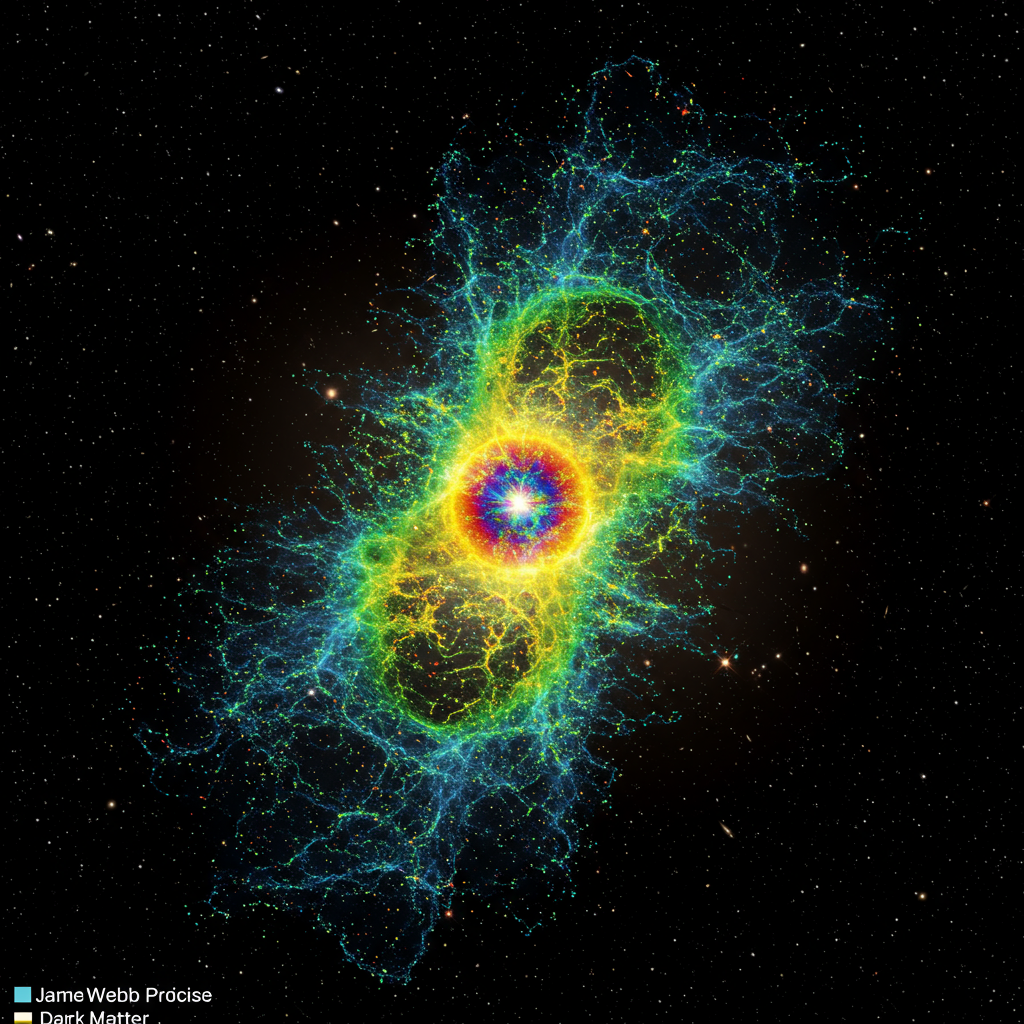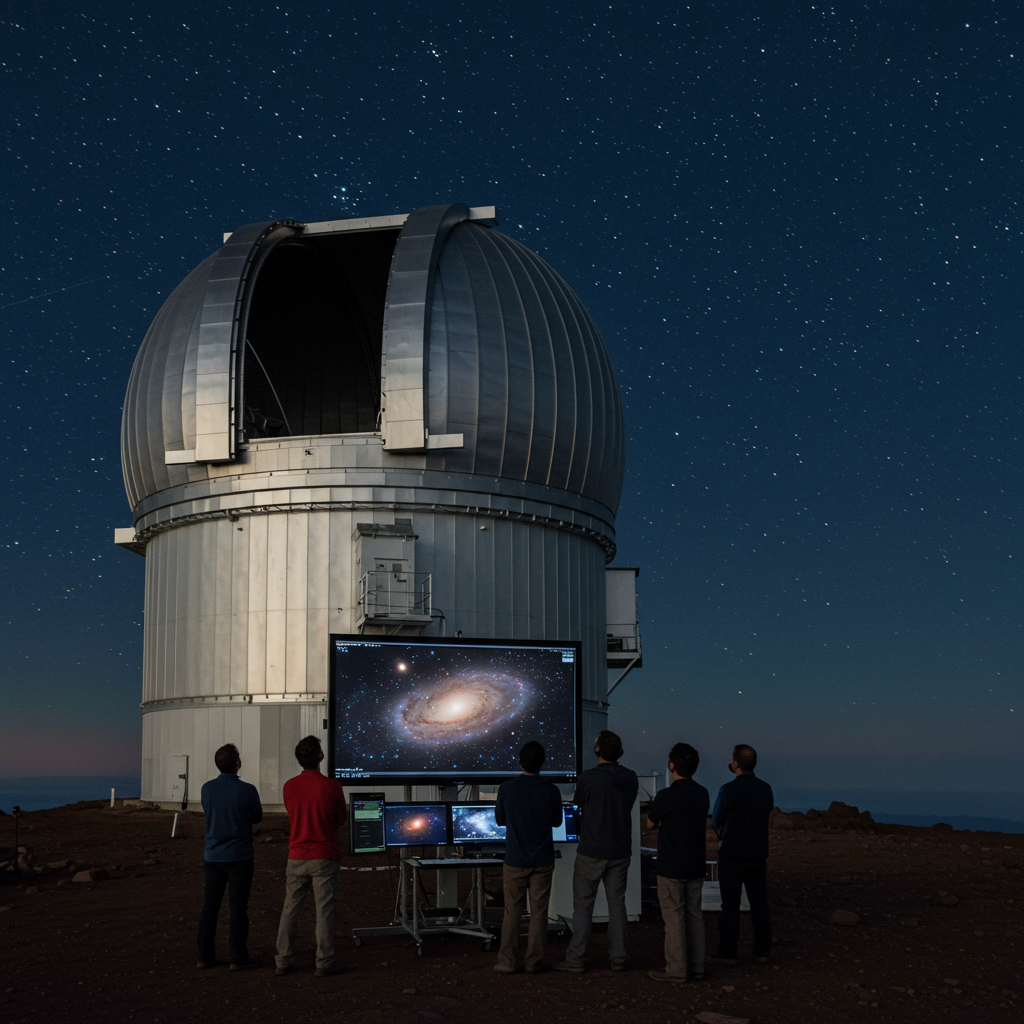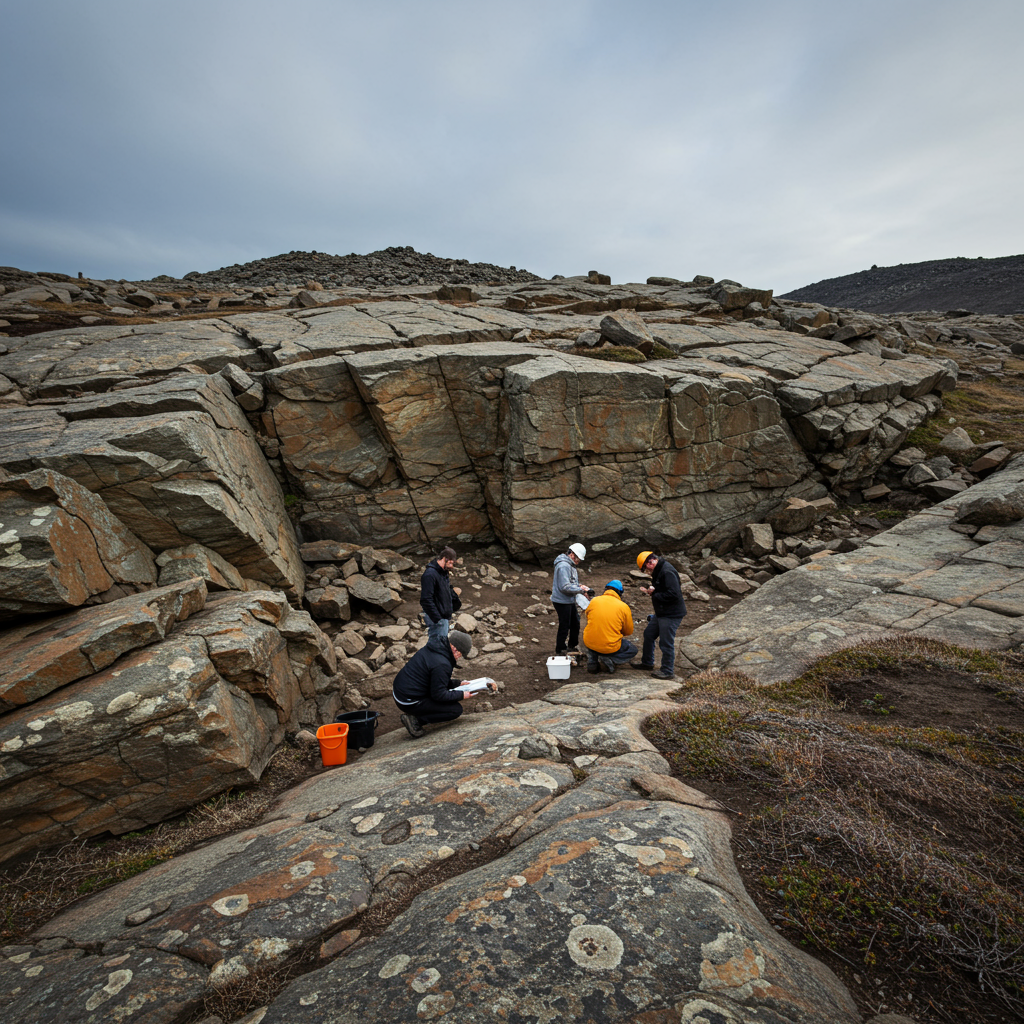NASA’s James Webb Space Telescope has delivered a truly groundbreaking view of the iconic Bullet cluster, a colossal structure born from the violent collision of two massive galaxy clusters. These new observations, captured in stunning near-infrared detail, have allowed scientists to create the most precise map yet of this cosmic crash site. This refined mapping offers crucial insights into the distribution of mass, including the mysterious, invisible substance known as dark matter.
For astronomers, understanding galaxy cluster collisions is like watching cosmic history unfold. These high-speed impacts are rare and dramatic events in the universe. The Bullet Cluster, located 3.8 billion light-years away in the constellation Carina, is a prime example. It’s the aftermath of two enormous galaxy clusters smashing through each other. To truly grasp what happened and in what sequence, researchers must first meticulously define all the components within this complex scene.
Webb’s Sharp Eyes Peer Deep into the Bullet Cluster
The James Webb Space Telescope provided unprecedented data for this task. Its sensitive Near-Infrared Camera (NIRCam) delivered extremely detailed images covering a significant portion of the Bullet Cluster. These images revealed not only the familiar galaxies within the clusters but also an abundance of much fainter and more distant galaxies lying far behind them. Pinpointing these background objects with such clarity was a key step.
Previous studies of the Bullet Cluster used other telescopes and relied on gravitational lensing data, but Webb dramatically improved the quantity and quality of this information. Lead author Sangjun Cha, a PhD student at Yonsei University in Seoul, South Korea, explained, “With Webb’s observations, we carefully measured the mass of the Bullet Cluster with the largest lensing dataset to date, from the galaxy clusters’ cores all the way out to their outskirts.” This extensive dataset yielded far more precise estimates of the system’s mass distribution compared to earlier efforts.
Mapping the Invisible: How Gravitational Lensing Works
All galaxies, and indeed galaxy clusters, contain significant amounts of dark matter. This elusive substance doesn’t emit, reflect, or absorb light, making it inherently invisible to standard telescopes. However, dark matter does exert a powerful gravitational pull. This is where the principle of gravitational lensing becomes crucial.
Think of a massive object like a galaxy cluster as a cosmic magnifying glass. Its gravity warps the fabric of spacetime around it, bending the light from objects located behind it. This bending distorts the shapes of those background galaxies as seen from Earth. By carefully measuring these subtle distortions across thousands of background galaxies visible in Webb’s sharp images, astronomers can infer the total amount of mass – both visible matter (like stars and gas) and invisible dark matter – present in the foreground cluster and map out exactly where it’s located.
Co-author James Jee, a professor at Yonsei University, used a simple analogy to explain this: “You cannot see the water unless there is wind, which causes ripples. Those ripples distort the shapes of the pebbles below, causing the water to act like a lens.” In space, he noted, dark matter is like the invisible water, and the distorted background galaxies are the “ripples” that reveal its presence and distribution. Using this technique, the research team measured the total mass across the scene.
The Striking Story of Gas vs. Dark Matter
The Bullet Cluster is particularly famous because it provides some of the strongest evidence for the existence of dark matter and reveals some of its fundamental properties. During the high-speed collision of the two galaxy clusters, different components behaved differently.
Most of the ‘normal’ or visible matter in galaxy clusters is in the form of hot gas filling the space between the galaxies. When the two clusters collided, this vast amount of hot gas was significantly affected by ram pressure – essentially, a cosmic wind created by the motion. This caused the gas to be stripped away from the individual galaxies and left behind in the wake of the collision, forming a distinctive “bullet” shape visible in X-ray light. Data from NASA’s Chandra X-ray Observatory clearly shows this hot gas as a pink region in composite images of the cluster.
However, the dark matter behaved differently. According to Kyle Finner, a co-author and assistant scientist at IPAC at Caltech, “As the galaxy clusters collided, their gas was dragged out and left behind, which the X-rays confirm.” In contrast, Webb’s detailed mapping of the mass distribution, dominated by dark matter, shows that the dark matter largely remained aligned with the locations of the individual galaxies within each cluster.
This stark difference in behavior between the hot gas (normal matter) and the dark matter is profound. It strongly supports the idea that dark matter interacts very weakly with itself, if at all. If dark matter particles frequently collided with each other, like particles in a gas, they would likely have been slowed down and also stripped away from the galaxies during the collision, similar to the gas. The fact that they passed through largely unimpeded, sticking with the galaxies, is powerful evidence that dark matter is ‘non-self-interacting.’ These new observations from Webb place tighter constraints on how much dark matter particles might possibly interact with each other, reinforcing earlier findings with greater precision.
Tracing Dark Matter with Starlight
Beyond mapping the total mass via gravitational lensing, the team also carefully mapped and measured the collective light emitted by stars that are no longer gravitationally bound to individual galaxies. These are known as intracluster stars, and they drift freely within the vast gravitational potential well of the galaxy cluster itself.
Their findings provided another valuable piece of evidence. Cha confirmed, “We confirmed that the intracluster light can be a reliable tracer of dark matter, even in a highly dynamic environment like the Bullet Cluster.” This suggests that these unbound stars are primarily bound by the gravity of the cluster’s dark matter halo. If intracluster light is indeed a good proxy for dark matter distribution, it could potentially offer a new way to study dark matter properties in other parts of the universe.
Unraveling a More Complex Cosmic History
The highly detailed map of the Bullet Cluster’s mass distribution, created using Webb’s observations, also provides clues about the system’s complex formation history. Viewed as a whole, the measurements refine what scientists know about how mass is spread throughout the cluster.
The larger galaxy cluster, now situated on the left side of the system, shows an unexpected feature: an asymmetric, elongated area of mass extending along its left edge within the region mapped as dark matter (shown in blue in composite images). This irregularity suggests that the Bullet Cluster might not be the result of a simple, single head-on collision between just two clusters.
James Jee speculated that this asymmetry points to previous events. “A more complicated scenario would lead to a huge asymmetric elongation like we see on the left,” he said. It’s possible that the larger cluster might have undergone a prior minor merger with another, smaller galaxy group before its dramatic collision with the cluster now on the right. Alternatively, or in addition, it might have experienced a violent interaction after the main impact, causing an additional disruption and shake-up of its contents. These detailed mass maps from Webb are allowing astronomers to piece together this intricate cosmic timeline.
What’s Next for the Bullet Cluster?
While Webb’s NIRCam covered a significant portion of the massive Bullet Cluster, it didn’t capture the entire structure in this initial round of observations. Jee likened it to seeing only the “head of a giant,” noting that while the current images allow for extrapolating the potential total mass, “precise measurements will require future observations of the giant’s whole ‘body’.”
Fortunately, future tools are on the horizon. NASA’s Nancy Grace Roman Space Telescope, set to launch by May 2027, is designed with a much wider field of view than Webb while still operating in the near-infrared. Kyle Finner highlighted its potential: “With Roman, we will have complete mass estimates of the entire Bullet Cluster, which would allow us to recreate the actual collision on computers.” Complete mapping of the entire system will enable researchers to run detailed computer simulations, effectively “replaying” the collision event to better understand its dynamics and refine our models of dark matter’s behavior under extreme conditions.
Webb’s observations of the Bullet Cluster represent a significant leap forward in our ability to map the invisible universe and study the properties of dark matter. By combining Webb’s unprecedented near-infrared detail with data from other observatories like Chandra, scientists are gaining a sharper picture of how cosmic structures form and evolve, bringing us closer to understanding the fundamental nature of dark matter, which constitutes the vast majority of the universe’s mass.
Frequently Asked Questions
How did the James Webb Space Telescope create a detailed map of the Bullet Cluster’s mass?
Webb created the detailed mass map by using the principle of gravitational lensing. The massive Bullet Cluster bends light from thousands of fainter galaxies located much farther away behind it. By precisely measuring the distorted shapes and positions of these background galaxies in Webb’s extremely sharp near-infrared images, astronomers could calculate the total gravitational pull across the cluster. This allowed them to map the distribution of all the mass in the cluster, including both visible matter and the invisible dark matter, with unprecedented accuracy.
What did Webb’s observations reveal about the nature of dark matter in the Bullet Cluster collision?
Webb’s observations provided strong evidence that dark matter is largely non-self-interacting. The detailed mass map showed that the dark matter remained aligned with the individual galaxies within the colliding clusters. This is in stark contrast to the hot gas (which makes up most of the visible matter), which was stripped away from the galaxies during the collision and left behind (as seen in X-ray data). The fact that dark matter stuck with the galaxies indicates it did not experience significant friction or interaction with itself during the high-speed impact, unlike the gas.
What do the Webb findings suggest about the history of the Bullet Cluster’s collision?
The detailed mass map from Webb revealed unexpected asymmetries, particularly an elongated area of mass on the left side of the larger galaxy cluster. This irregular shape suggests that the Bullet Cluster’s formation history might be more complex than a simple collision between just two clusters. It could mean that the larger cluster experienced a prior minor merger with another object before the main impact, or perhaps underwent another violent interaction afterward. The detailed mapping helps astronomers piece together this intricate sequence of cosmic events.




